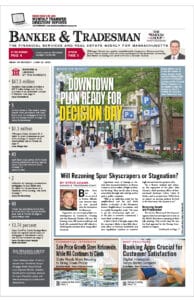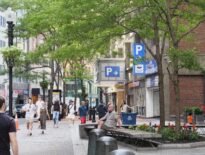
Andrew Mikula
Nonantum, a charming older neighborhood in Newton with blue collar roots, was in an uproar. On Sept. 26, 2023, the city held a public hearing regarding zoning changes in Nonantum that would allow for denser housing in much of the neighborhood. The upzoning proposal, part of the city’s MBTA Communities law compliance efforts, had engendered some vehement opposition among residents for several reasons. But in a recording of the public hearing, one of those reasons sticks out: traffic safety.
At one point during the public comment period, multiple kids approached the microphone to predict that the proposed zoning changes “would cause more accidents and injuries” and “would be tragic for the kids in Nonantum.” By October 2023, the proposed zoning changes in Nonantum had been scaled back substantially.
Traffic safety claims can be effective at persuading local boards and committees to delay or deny new development proposals, and many other recent examples from around New England attest to that. Certainly, any safety concern should be taken seriously and addressed promptly, but it’s also easy for the public to overestimate the negative effects (and underestimate the potential positive effects) of new development on road safety. There are three primary reasons for these misguided public perceptions.
First, residential development, especially well-located multifamily development, doesn’t produce nearly as much traffic as other land use typologies. According to the Institute of Transportation Engineers Trip Generation Report, multifamily homes typically generate 7 vehicle trips per unit per day, compared to 10 trips per single-family home per day and 38 trips per 1,000 square feet of retail per day. (The report does not clearly define “multifamily” with a unit count.)
Using these figures, building 500 multifamily housing units on the former site of MCI Concord would only increase traffic volumes on Route 2 in Concord by about 7 percent, and probably less considering there was some previous traffic associated with the prison.
Second, the relationship between traffic volume and traffic safety is complex. Empirically, it’s true that areas with more multifamily or mixed-use development tend to experience more vehicle crashes than areas with mostly single-family homes. But a higher number of crashes in a certain area says very little about a given person’s risk of being involved in a crash.
In fact, some studies find that the number of traffic crashes tends to increase more slowly than traffic volumes, such that “crash risk for individual road users is lower at higher traffic intensities than at lower intensities.”
And even when it comes to the worst possible outcome – traffic-related deaths – the impact of higher “traffic intensities” is far from clear.
A Case In Point In Concord
Let’s use census-designated urban and rural areas as a proxy for “traffic intensity.” According to the National Highway Traffic Safety Administration (NHTSA), between 2009 and 2023, 91.6 percent of traffic fatalities in Massachusetts occurred in urban areas. But the share of Massachusetts residents who live in urban areas was 91.3 percent in 2020 and 92 percent in 2010, and the share of jobs in urban areas is likely even higher based on national figures.
The same principle applies to safety for vulnerable road users. It’s not surprising that the intersections with the most frequent bicycle crashes in Massachusetts from 2012-2021 were overwhelmingly concentrated in Cambridge and Somerville, the cities in Greater Boston with the highest percentage of workers who commute by bike. That doesn’t mean that it’s more dangerous to be a cyclist in Somerville than it is in, say, Concord; it’s just a lot more common for people to get around by bike in Somerville.
Lastly, development projects can provide opportunities to mitigate existing traffic safety concerns. While public officials should be careful to meet legal requirements that exactions are clearly related to the development’s impacts, there is a clear precedent in Greater Boston for using development review processes to negotiate traffic safety-related mitigations. Relatively small interventions like repainting crosswalks are common, but in some cases, there is the potential to change traffic patterns more radically.
Again, the MCI Concord redevelopment is a good example of this. In MassDOT’s 2024 Route 2 Corridor Study, the agency identified several redesign scenarios for the West Concord rotary that could improve the rotary’s safety. With MCI Concord’s main entrance located about 200 feet from the rotary, capital raised in connection with the site’s redevelopment could be a crucial resource needed to fund these safety improvements.
There’s also a clear precedent for these kinds of improvements in Somerville, which in 2019 secured a $4.4 million grant to convert a dangerous rotary into a more traditional urban intersection, all as part of the redevelopment of a nearby public housing complex.
To be fair, housing developments sometimes do worsen traffic safety, especially those that add unnecessary driveways or create insufficient pedestrian infrastructure. But it’s not empirically clear that new housing developments as a whole increase accident risks for existing area residents. As such, debates on the safety effects of a given project should be viewed in highly contextual terms. Proposed housing developments should be viewed as opportunities to leverage public and private investment to improve traffic safety, not as threats that will inevitably make it worse.
Andrew Mikula is a senior housing fellow at the Pioneer Institute.





